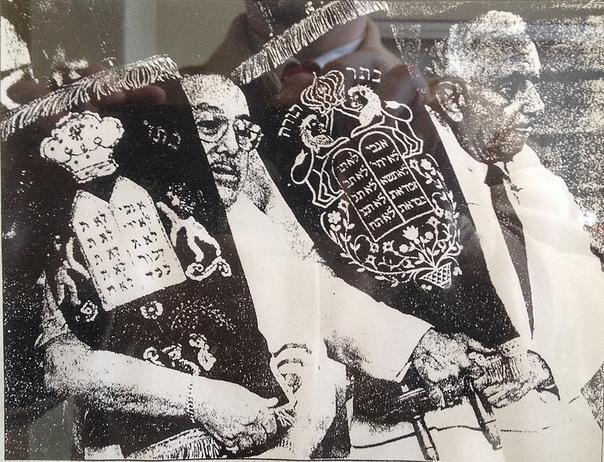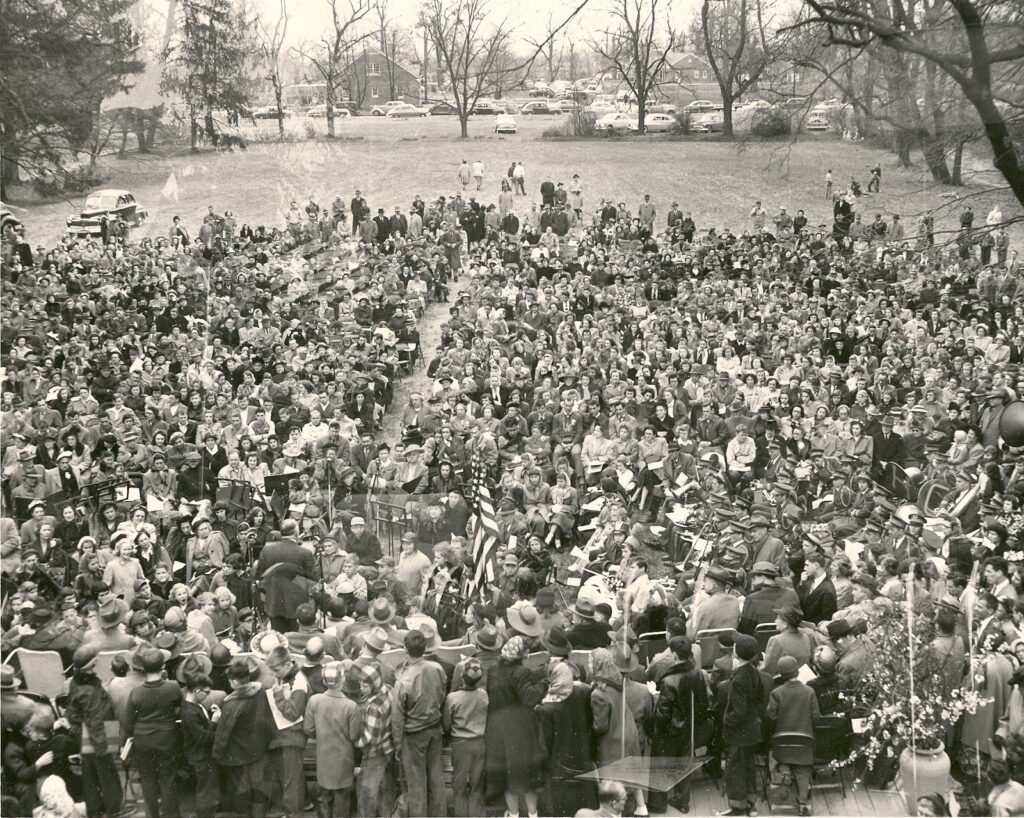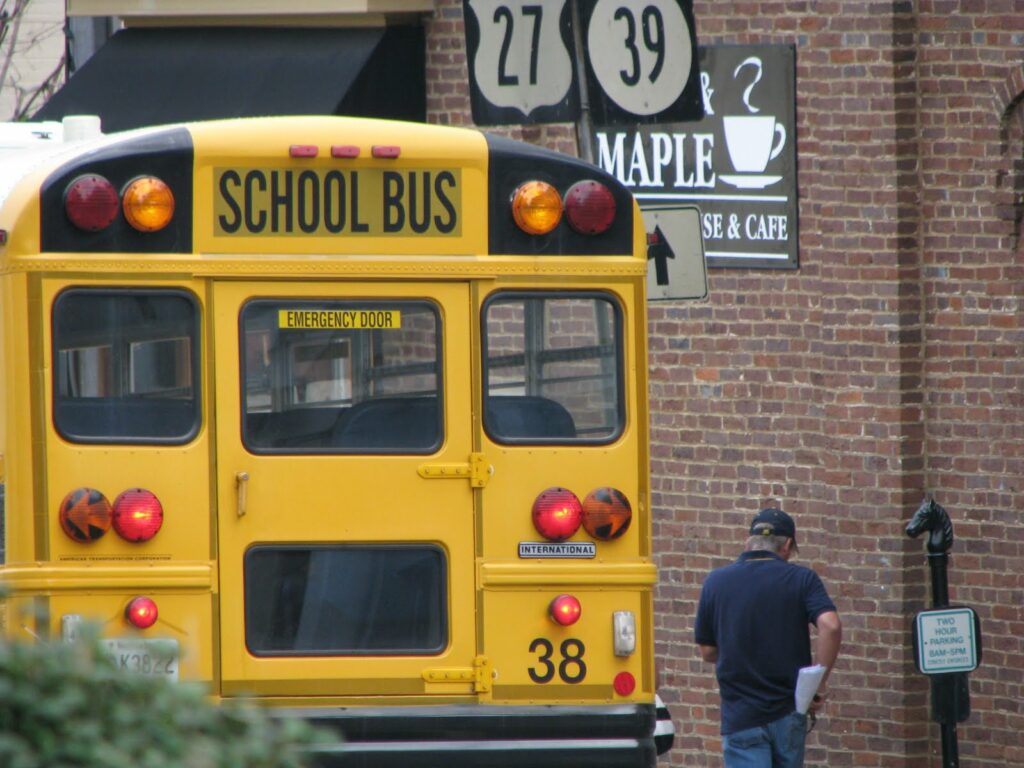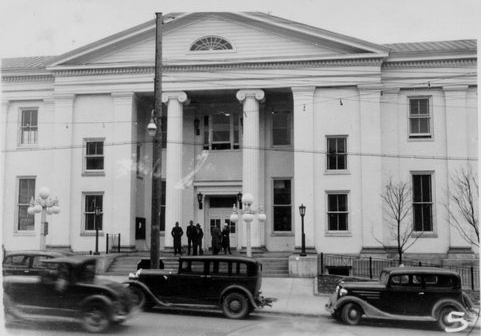Might what appears to possibly be a routine religious service be something greater? Make your guesses (and if you were there, tell your tales) in the comments as part of this week’s #ThrowbackThursday.
Author: thekaintuckeean
Ashland Dedicated as a Historic House Museum in 1950
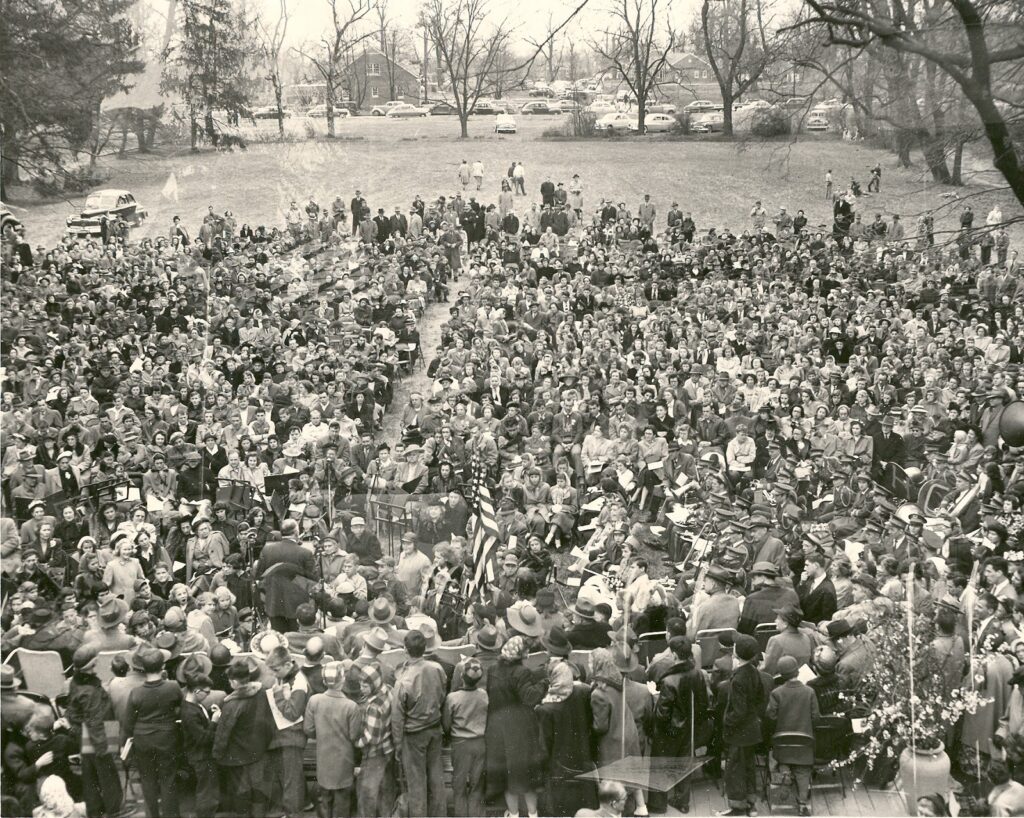 |
| Vice President Barkley Addresses Crowd at Ashland – Lexington, Ky. Photo: History of a House Museum |
The large crowd photographed in last week’s #TBT made for some interesting guesses, including the Cane Ridge revivals. But in what is becoming a weekly tradition, Michael Chambers was the first to accurately guess the answer to last week’s puzzler.
On April 12, 1950, Vice President Alben Barkley addressed the thousands gathered on the lawn of Ashland: the home of Henry Clay for its dedication as a historic house museum open to the public.
Then-mayor Tom Mooney proclaimed the day “Henry Clay Day” in the city where festivities kicked off at Cheapside Park before the parade processional down main street to Ashland.
Barkley declared: “This fine mansion now will rank alongside Mount Vernon, Monticello, the Hermitage, and other public memorials to great men of this nation….generations to come will thank you for preserving this shrine.”
Only a historic marker remains of Main Street Christian Church
 |
| Historic Marker #19 – Lexington, Ky. |
On Main Street in downtown Lexington, in front of the police station, stands a historic marker recalling the Main Street Christian Church which once stood on the site.
Built on this site in 1842. The 12-day Campbell-Rice debate on Christian Baptism, etc., was held here Nov. 1843, Hon. Henry Clay presiding.
The only physical vestige remaining of the historic church is this marker on Main Street.
This Just Happened, a weekly roundup
Make a joyful noise … except apparently at the Lexington Farmer’s Market [Herald-Leader]
CentrePointe’s latest rendition got its blessing from the CADRB. Even so, consensus is that the latest design is ‘blah’ and ‘regressing’ [ProgressLex]
Profiled last Sunday was one of downtown’s loveliest homes of new construction with character [Herald-Leader]
Lighting strike shocks Creationist employee [WKYT]
A proposal for smart growth in Jessamine County
 |
| Along the US68 Mixed Use Trail (Old 68) Jessamine County, Kentucky |
Last week, Fayette Circuit Court Judge James Ishmael ruled against Burgess Carey and his zipline operation in rural Fayette County Boone Creek. The injunctive relief won by the Lexington Fayette Urban County Government closed Boone Creek Outdoors. Carey’s Boone Creek Outdoors had offered the ziplines, canopy tours, and fly fishing.
These tourist attractions were located on private property owned by Mr. Carey, but were ruled to be outside the scope of a conditional use permit issued to him by the LFUCG in 2000.
During the few months which Boone Creek was open, it was routinely filled with visitors. It was a unique attraction in the region and one which had the promise of great success.
And it is the kind of success that we, in Jessamine County, must embrace.
As I’ve noted here before, Jessamine County has abundant natural beauty and a rich history.
These resources must be harnessed into an economic engine, rather than cast aside in favor of old-fashioned ideas and stale economics.
To some extent, our community has begun to recognize the advantages of adventure tourism.
The Kentucky River Blueway Trail includes the 42 miles along Jessamine County’s southern border, providing kayaking, fishing, canoeing, and other forms of recreation to visitors.
But I believe we could — and should — go further. Imagine a complete network of bicycle paths throughout the county. These could be placed alongside existing roads or along the paths of either active or decommissioned rail lines. Specialized paths like Lexington’s Legacy Trail could also be added to the bicycle network where necessary.
Couple this with a bounty of mountain biking options. Include opportunities for hiking, ziplines, canopy tours, and other ideas – the sky is the limit!
By embracing adventure tourism, Jessamine County could realign itself as a major destination in central Kentucky. Look south to Rockcastle County, where the small community of Livingston has re-emerged like a phoenix. Once thriving prior to the installation of Interstate 75, this small town deteriorated to almost nothing. But the past few years, a committed citizenry has brought to Livingston a renaissance. In June, it was designated Kentucky’s second Trail Town.
With such a designation, increases in locally-owned restaurants, lodgings, shops, and trailsupport businesses naturally ensue. It is the kind of industry that supports both historic and landscape preservation. And it is the kind of industry that does not require the construction of an unnecessary, expensive interstate connector.
For better or worse, we do not have the same zoning restrictions here that exist in Lexington.
We do, however, have the natural and historic resources to make our community an exciting destination.
Imagine turning Jessamine County into Lexington’s backyard — a playground where the people of central Kentucky come to relax and have fun.
This kind of idea requires commitment of private property owners, entrepreneurship, and a shared vision among political leaders.
But I suggest that this way forward is a positive one which will enable Jessamine County to grow economically while retaining its unique character.

This column originally appeared in the Jessamine Journal.
It should not be republished without permission.
A Large Crowd Gathers for Today’s #TBT
This large crowd gathered for a special event in the middle of the last century. Some of you may have been in the crowd!
Do you recognize the location? What was the event? And on what date was this photo taken? Make your guesses below in the comments.
And if you were there, by God, tell us about your memories of that day!
Answering Last Week’s #TBT Mystery: the Clark County Courthouse
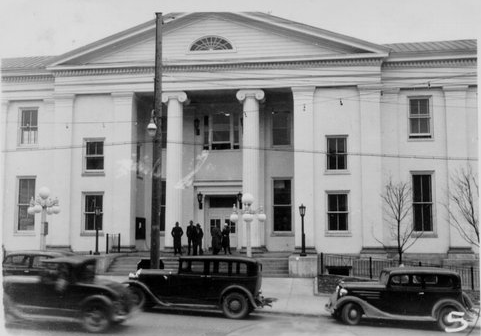 |
| Clark County Courthouse – Winchester, Ky. (Photo: University of Kentucky) |
Last week, I received several good guesses attempting to answer last week’s #ThrowbackThursday. Someone guessed Jefferson County (Louisville), while another guessed Lincoln County (Stanford). It was, however Michael Chambers who was the first to accurately identify last week’s #TBT photograph of the Clark County Courthouse in Winchester.
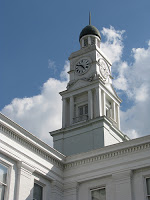 |
| Clocktower of the Clark Co. Courthouse |
The magnificent edifice of the Clark County Courthouse in downtown Winchester was completed in 1855 the cost about $40,000. The iconic Clocktower was added in 1889, while a rear addition was built in 1938.
Last week’s photo was taken in 1939 after the completion of that rear addition. It is contained in the Goodman-Paxton Photographic Collection at the University of Kentucky.
Be sure to check out Nate’s notes from the KY120 project on the “stellar” Clark County Courthouse.
The First Successful Leg Amputation Surgery. In Kentucky
Throughout the Commonwealth, roadside historic markers dot the landscape in both our cities and rural areas like. On this website, I have often profiled some significant (and not so significant) historic markers. Regardless of their recognition or renown, each represents an interesting piece of the Kentucky story. Each Monday, I will profile a different distort marker in a new series called #MarkerMonday.
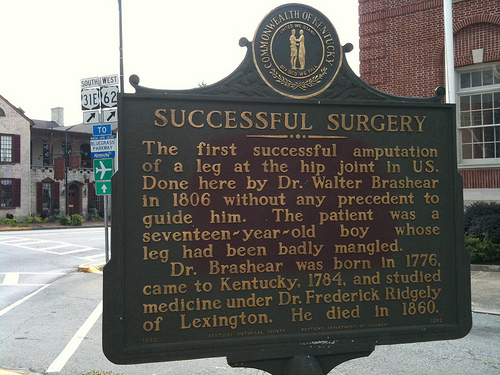 |
| “Success Surgery” – Bardstown, Ky. |
Near the old courthouse in downtown Bardstown, stands a historic marker of medical significance. Fred was in this community, in 1806, that Dr. Walter Brashear performed the first successful imputation of the leg (hip joint down). Marker #1282 reads:
The first successful amputation of a leg at the hip joint in US. Done here by Dr. Walter Brashear in 1806 without any precedent to guide him. The patient was a seventeen-year-old boy whose leg had been badly mangled. Dr. Brashear was born in 1776, came to Kentucky, 1784, and studied medicine under Dr. Frederick Ridgely of Lexington. He died in 1860.
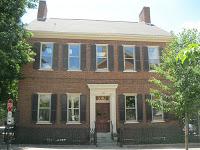 |
| Ridgely House – Lexington, Ky. |
The reference to Dr. Ridgely should not go unnoticed for Lexington history enthusiasts, for his house still stands at 190 Market St. in Gratz Park.
And as for Dr. Brashear, he was married to Margaret Barr of Lexington in 1802. After the succesful surgery, he continued to practice medicine until 1822. Then, he moved his family and slaves to Louisiana where he developed his sugar plantations.
It is peculiar to note that some records identify Dr. Brashear a United States Senator from Louisiana, though official biographies of members of Congress are silent on the matter
The Wheels on the Bus Go Round and Round…
The wheels on the bus go round and round … all through the town.
There it is again: the yellow bus.
After a three-month slumber through the heat of summer, the numbered yellow carriages are again hitting the roads.
They criss-cross the county and leaving no child behind as the make their way down nearly every county road.
Morning and afternoon. Five days a week.
On board, they carry precious cargo: our children.
But without the school transportation system, many students would be unable to attend to attend school. Yes, gone are the days when one would “walk five miles uphill (both ways) regardless of the weather” to arrive for classes.
Our grandparents’ tales on getting to school just don’t hold up anymore. While they love to regale us with stories of times gone by, the ubiquity of the automobile, changes in academic theory and budgets, as well as the outward development of our communities have altered the location and size of our schools.
In fact, I was surprised how these factors wove together for the latest prohibition at the newly opened Red Oak Elementary. Reading last week’s Jessamine Journal, I discovered that walking to Red Oak is expressly prohibited.
I wonder what grandpa would think?
But whether we like it or not, our society is highly reliant on the automobile. And our schools rely on the yellow buses to get pupils into the classroom.
Without providing transportation, how else could we ensure that attendance rates remain north of 95%?
More critical than transporting our children, however, is doing it safely. Unfortunately, Kentucky has witnessed some of the worst bus crashes in American history on her own soil. In turn, our regulations concerning school bus safety are some of the more progressive in the country.
I was pleasantly surprised to learn on the Jessamine County Schools’ website that “a school bus is the safest form of ground transportation [and] is nearly eight times safer than a passenger vehicle.”
Let’s keep it that way, Jessamine County. The first few weeks certainly wreak havoc on morning commute times as commuters struggle to adjust to the many stops the yellow bus will make.
Be patient and adjust your schedules accordingly.
Pay attention not just when the bus is stopped, but whenever children are present. Statistics also show that the highest percentage school bus-related fatalities come from pedestrians in loading zones.
Be watchful and drive safely.
Remember, those yellow buses carry precious cargo.

This column originally appeared in the Jessamine Journal.
It should not be republished without permission.
A Courthouse is Today’s #TBT (Plus Last Week’s Answer)
Kentucky has 120 counties within its borders. Of course, each county has a courthouse in which it conducts its official business. Where is this impressive and beautiful courthouse located?
And the answer to last week’s #ThrowbackThursday is after the jump…
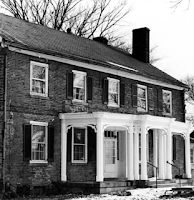 |
| Wllis Green House Photo: NRHP File |
The answer to last week’s puzzle is the Willis Green House (a.k.a. Waveland), located in Danville. Recently acquired by a consortium of preservation groups seeking to protect this landmark. A bit of background on the property from an earlier post:
The property was built in 1800 by Willis Green as part of a several hundred-acre farm. Green was an early settler of the Commonwealth having first arrived here as a surveyor in 1782. Green even represented Kentucky County in the Virginia Legislature. He and his wife, Sarah Reed, along with their 12 children, called Waveland home. It is said that the 1783 Green-Reed nuptials were “one of the first Christian marriages ever solemnized on Kentucky soil.”
Of the nine state constitutional conventions held in Danville, Green was a delegate at two. He was one of the original trustees of Transylvania Academy and was involved in the establishment of both Centre College (1819) and the Kentucky School for the Deaf (1822). From 1839-1845, Green served as a Whig in Congress as a representative from Kentucky.
It is a two-story, brick home in the Georgian style. Though vacant for decades and despite damage to windows, doors and a roof collapse, the interior woodwork – the product of Irish craftsmen from Philadelphia – remains intact and in good condition.
You can expect to see more about the history of the Willis Green House on this site in the coming weeks! And congratulations to Rachel Alexander of Bricks + Mortar who was the first to correctly guess last week’s #TBT!!

